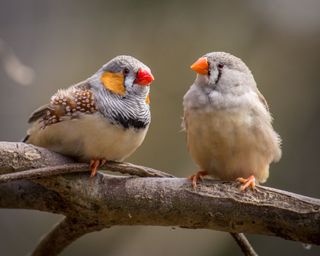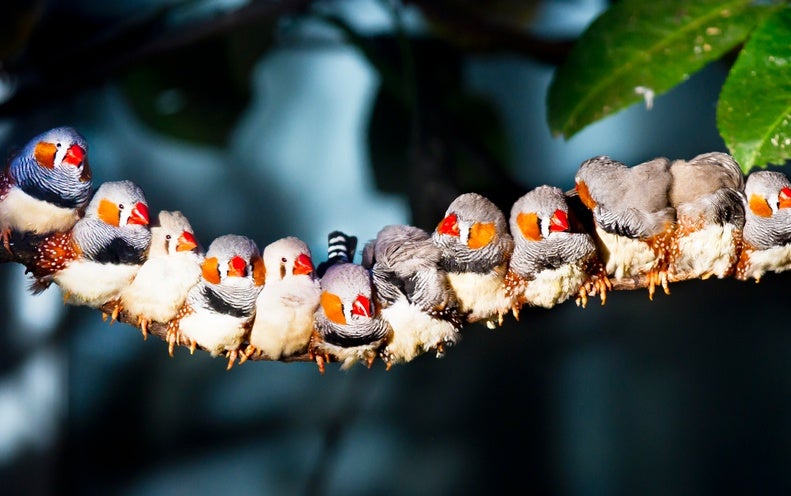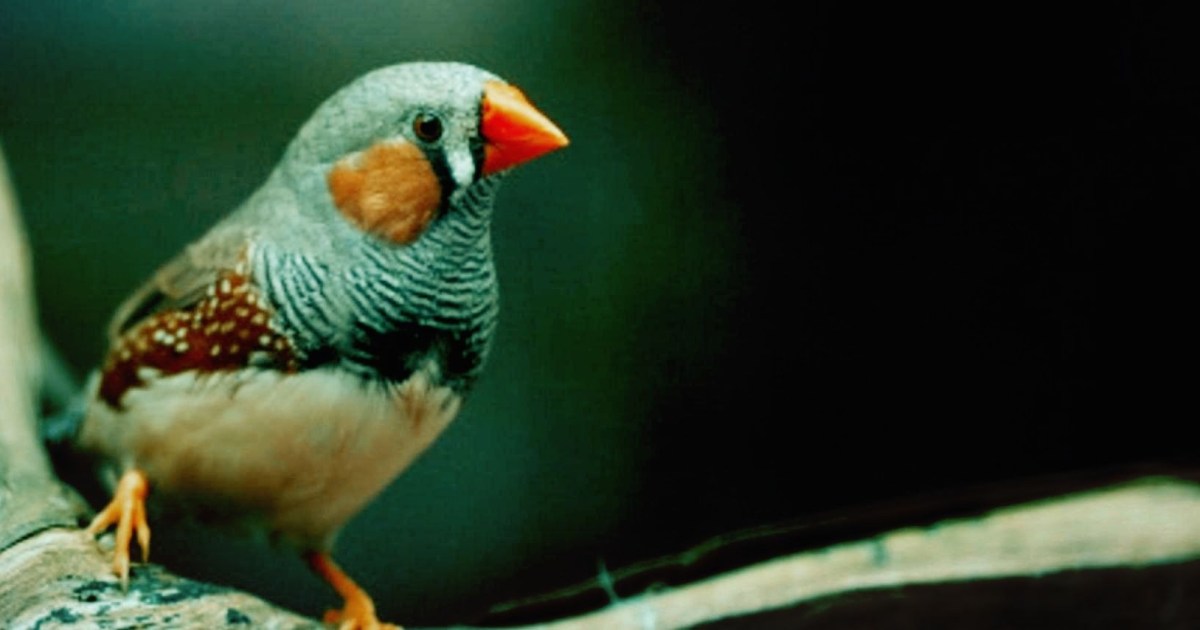
Dads usually teach zebra finches their songs. (Image credit: Shutterstock)
Zebra finches usually learn to sing from their fathers. But now, scientists have taught the little birds to memorize a tune without ever learning it — and they did so by implanting memories of the songs in the birds’ brains.
This strange experiment was designed to discover the brain pathways that encode note duration in the birds. Ultimately, the point is to draw parallels with how humans learn to speak. Hopefully, the research will help scientists target genes and neurons to improve language learning in people with autism and other conditions that affect vocalization.
“This is the first time we have confirmed brain regions that encode behavioral-goal memories — those memories that guide us when we want to imitate anything from speech to learning the piano,” Todd Roberts, a neuroscientist at the University of Texas Southwestern O’Donnell Brain Institute, said in a statement. “The findings enabled us to implant these memories into the birds and guide the learning of their song.”
A little bird told me
Zebra finches (Taeniopygia guttata) are small, social birds native to Central America and popular as pets. Just as infant humans learn language by imitating what they hear, zebra finches listen to their fathers sing and then practice the tunes. The new research reveals how the animals pull it off.
Roberts and his colleagues used optogenics to modify the finch’s neurons without ever exposing them to singing. This technique involves using light to control the behavior of photosensitive proteins in neurons, or brain cells, essentially allowing researchers to control when a neuron fires. Using this tool, the researchers were able to alter brain activity in a sensorimotor area known as Nif, which sends information to a specialized songbird brain region called the HVC. This area is involved in both learning and reproducing bird songs.

Related: 3D Images: Exploring the Human Brain
By pulsing light in a rhythm, the researchers were able to encode “memories” in the finches’ brains, such that the birds’ notes would match the duration of the light pulses. It was as if a father figure were making these instructions for the bird to memorize, but no father finch was present.
Understanding language learning
Note duration alone isn’t enough to teach a finch a full song, the researchers said; the birds also must learn other aspects of the melody, such as pitch.
“We’re not teaching the bird everything it needs to know — just the duration of syllables in its song,” Roberts said. “The two brain regions we tested in this study represent just one piece of the puzzle.”
With more pieces found, he added, it might be possible to teach the birds to sing a full melody without any teacher at all. “But,” Roberts said, “we’re a long way from doing that.”
This basic bird research is designed to unravel the circuits of the brain that make language learning possible. The link between the HVC and the Nif regions in birds is crucial for singing, the researchers reported this week in the journal Science. If communication between those two regions was cut after the bird had learned a melody, the animal could still sing the song. But if the HVC and Nif were cut off from one another before the bird had the chance to form memories of the song, the finch could never learn, no matter how many times it heard the song afterward.
“The human brain and the pathways associated with speech and language are immensely more complicated than the songbird’s circuitry,” Roberts said. “But our research is providing strong clues of where to look for more insight on neurodevelopmental disorders.”









